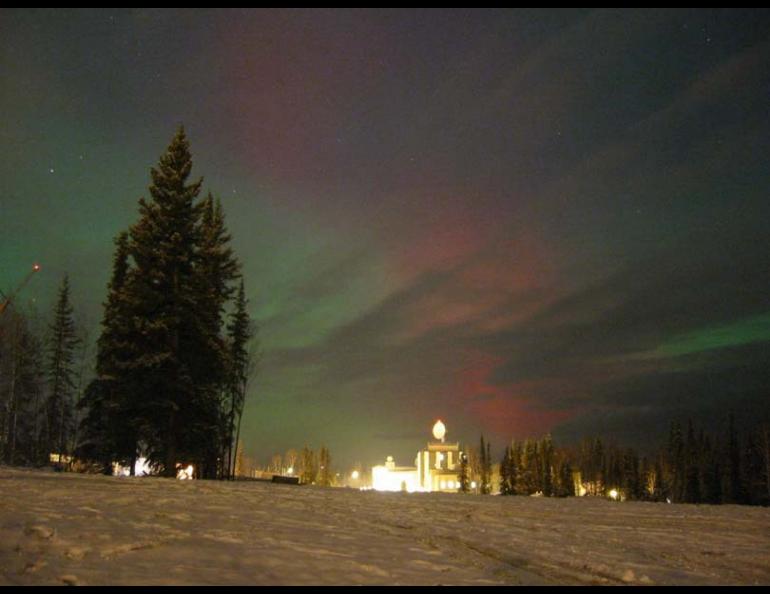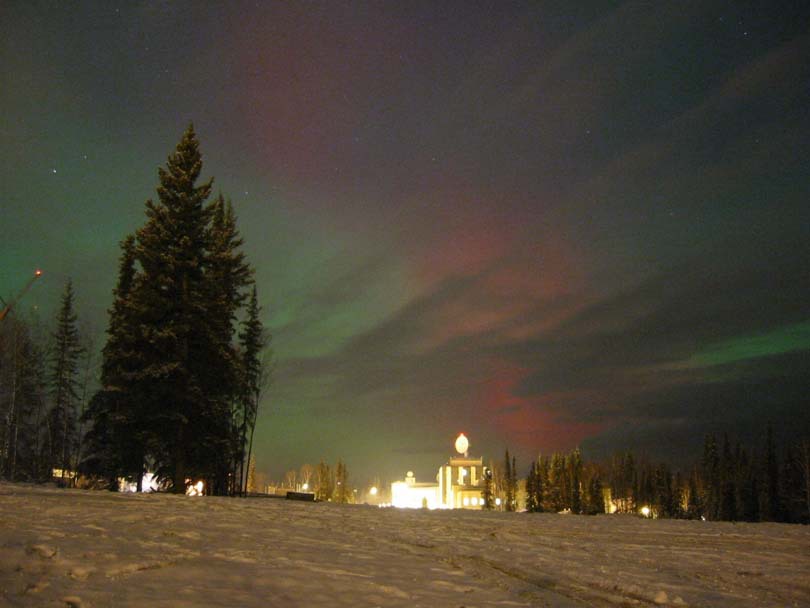
Black Spot on the Sun Creates a Show
Akasofu told Barkdull that he had seen a large sunspot, one that spits out solar flares resulting in auroras overhead in Germany, rare red auroras throughout the northern hemisphere, and disruption of high-frequency radio communications in the north. The solar flares that erupted from the sunspot included three of the largest flares scientists have seen in this new era of satellites.
Sunspots are cool, dark areas on the surface of the sun that indicate intense magnetic activity inside. Clusters of small sunspots make up large sunspots, such as the one that kicked the aurora into overdrive recently. Sunspots appear in greater numbers during the peak of an 11-year solar cycle, the last of which was 2000, but large sunspots often show up as the cycle winds down.
Scientists were able to see the recent sunspot because the sun rotates every 27 days and satellites orbiting between Earth and the sun broadcast images of the sun’s surface to several web sites. Aurora researchers, such as the Geophysical Institute’s Dirk Lummerzheim, saw the sunspot rotating toward Earth and solar flares—explosions on the sun’s surface—spouting from the sunspot.
“As soon as it came around, we could see huge flares erupting,” he said.
When the sunspot faced Earth, an enormous solar flare erupted on Oct. 28, Alaska time. Astronomers have an alphabetical scale for solar flares—C-class flares are normal, Ms are large flares that often produce good aurora, and Xs are extreme flares. The flare of Oct. 28 was an X-17, the third-largest recorded solar flare since the mid 1970s, when satellites gained the capability to measure them.
“Usually we get excited when we see an M,” Lummerzheim said.
Accompanying the giant flare was a coronal mass ejection—a huge bubble of gases that bursts out and away from the sun. The flare combined with the coronal mass ejection to send an enormous stream of electrons and the nuclei of atoms ripping toward Earth at 2,500 kilometers per second (5.5 million miles per hour). Most solar flares take several days to cover the 93 million miles between the sun and Earth; the recent flare’s shock front arrived in less than 20 hours.
The shock front first arrived at Earth as a blanket of protons that covered the northern part of the globe as it reacted with Earth’s magnetic field. These protons knocked out high-frequency radio communications above 57 degrees north latitude, a line extending from northern Scotland across Hudson Bay to the lower tip of Alaska and across Russia. Commercial and military aircraft pilots use high-frequency radios to communicate over long distances where other radios don’t work. HF radios skip signals off the ionosphere, sometimes enabling Alaska users to talk to people in California and beyond, but a mammoth solar flare scrambles the ionosphere enough to disable HF radios.
Researchers at the Geophysical Institute issue forecasts of aurora conditions at www.gi.alaska.edu and correspond with aurora watchers all over the globe. The giant solar flare of Oct. 28 and other large flares that followed caused red auroras that were seen by ranchers wearing cowboy hats and lots of other people who don’t often see the northern lights.
“I got reports from Oklahoma and Texas,” Lummerzheim said. “Even Madrid. Usually they get five aurora sightings in Germany each year. They have 10 already this year.”
As I was writing this column on Nov. 4th, 2003 a new record solar flare measured at greater than X-20 erupted from the same sunspot. Aurora researchers said the giant flare should not produce the same auroras as the X-17 flare because the giant sunspot rotated away from Earth and spewed its particles into outer space.





